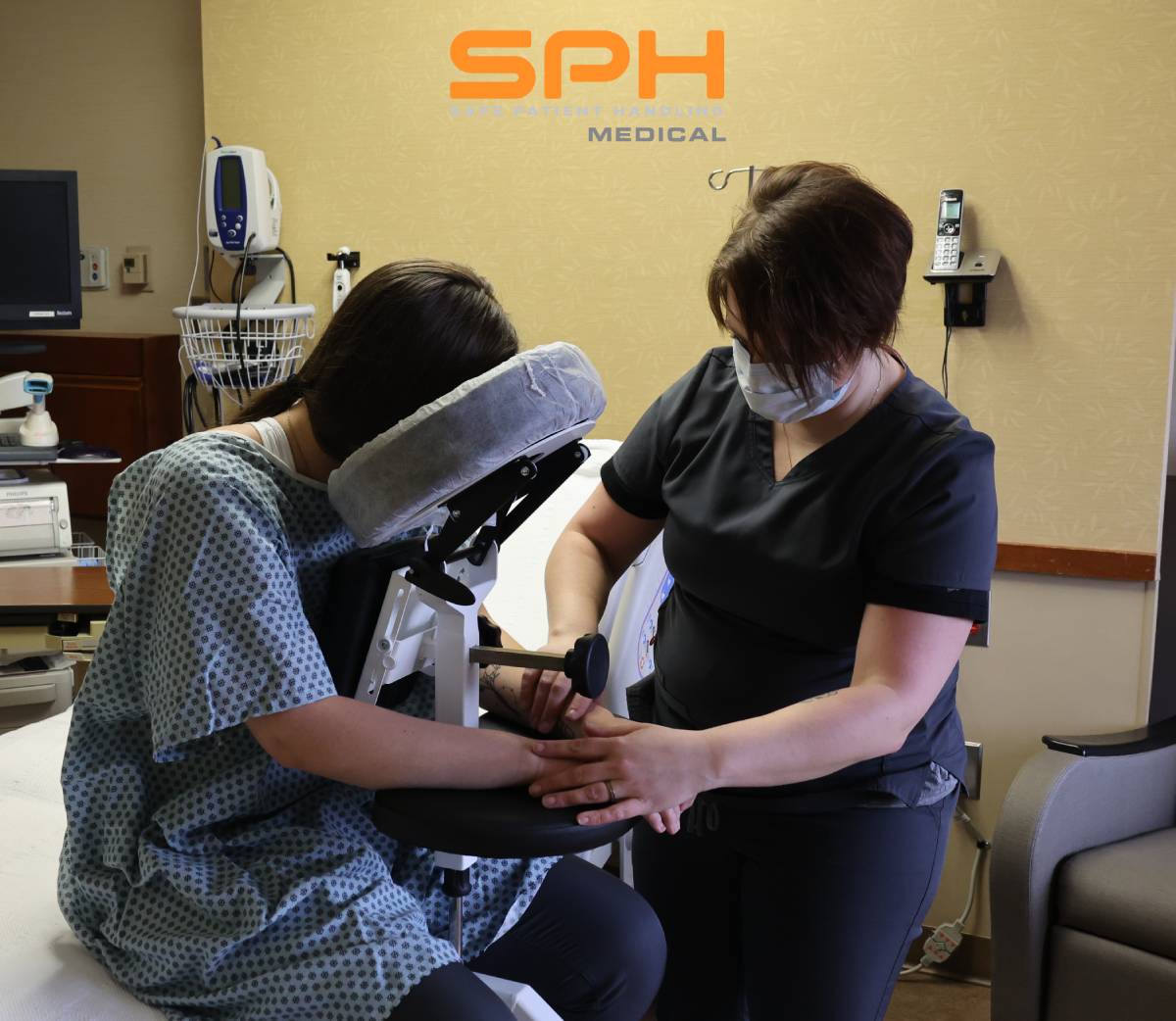The use of the EPD for patient positioning during spinal blocks and other procedures
An epidural or spinal block offers patients an option to remain awake and alert while receiving pain relief. They can even help patients to get back on their feet faster after surgeries and other procedures. Some doctors use epidurals to help patients acquire relief from chronic pain as well. An experienced medical professional blocks nerves by introducing an anesthetic, steroid or other medication via straight injection or a small catheter into the lower back. Epidural pain relief is often used during back, hip and knee surgery and the delivery of a baby. Yet, epidurals can pose risks to both patients and medical personnel. Read on to learn more about these risks and how staff at hospitals and surgical facilities are introducing safety during spinal blocks with an epidural positioning device (EPD).
How Common Is Epidural Pain Relief?
According to a Stanford study published in 2018, 71% of 17 million women received some form of spine-based pain relief during childbirth between 2009 and 2014. The researchers pulled the data from birth certificate records.
In a more recent 2021 study, also by Stanford, researchers learned that approximately 2.8 million pregnant women receive epidurals every year during delivery. As noted by the Mayo Clinic, approximately 50% of women who give birth at a hospital in a labor and delivery unit request epidural pain relief.
What Sort of Patient Injuries Can Take Place?
Accidental nerve damage is one of the most common injuries. Patients who experience nerve damage after an epidural often lose feeling, movement and strength in spots or extremities. Patients can also experience allergic reactions to medication, blood clots and infections.
Additionally, Stanford researchers found during the 2021 study that approximately 28,000 women across the nation experience an accidental puncture of the spinal dura mater membrane yearly. They tracked a small sample of women from the point of delivery up to 12 months and found that 74% of the new mothers experienced excruciating, debilitating headaches, known as post dural puncture headaches (PDPH), two months after delivery. By comparison, only 38% of mothers who didn’t experience an unintentional puncture had headaches. By six months, 52% of the first group still had headaches.
Of course, this type of injury and resulting headaches can happen to any patient who receives an epidural, including those who receive treatment through a surgery department. Other symptoms associated with PDPH include dizziness, nausea, vomiting, tinnitus, vision disturbances, lower pack or neck pain and physical stiffness.
What Risks Do Medical Personnel Face?
Anesthesiologists, nurses, operating room technicians and others must physically move patients into and out of position for an epidural. This type of movement often requires that they support a patient’s full weight with their bodies. They risk muscle and tissue strains and tears and back injury from attempting to lift too much weight or catching a falling patient.  If a patient loses balance, they risk falling with the patient and injuries associated with falls. They must also maintain patients in a particular seated position during the procedure, which can put strain on their arms and back.
If a patient loses balance, they risk falling with the patient and injuries associated with falls. They must also maintain patients in a particular seated position during the procedure, which can put strain on their arms and back.
How Does an Epidural Positioning Device Provide Safety During Spinal Blocks?
An epidural positioning device, such as an epidural chair, makes it easier for staff in a surgery department or labor and delivery unit to perform safety during spinal blocks. Although called an epidural chair, the EPD is actually a portable tool that the nurse or technician places in front of the bed or table where the patient sits during the procedure.
They can position the patient with optimal cervical, thoracic and lumbar spinal flexion. This means that the patient leans forward with a flexed spine while seated, which is the best position for a professional to perform the needle insertion to reduce the chance of an error. Instead of the nurse or technician holding the patient in the right position, the patient maintains the correct position by leaning against supports.
Sources:
Stanford Medicine; Epidurals increase in popularity; Tracie White; June 26, 2018
Stanford Medicine; Post-epidural headaches can be more serious than previously known; Tracie White; August 2, 2021
https://my.clevelandclinic.org/health/treatments/21896-epidural
Epidural: What It Is, Procedure, Risks & Side Effects; Cleveland Clinic medical professional; 10/14/2021



